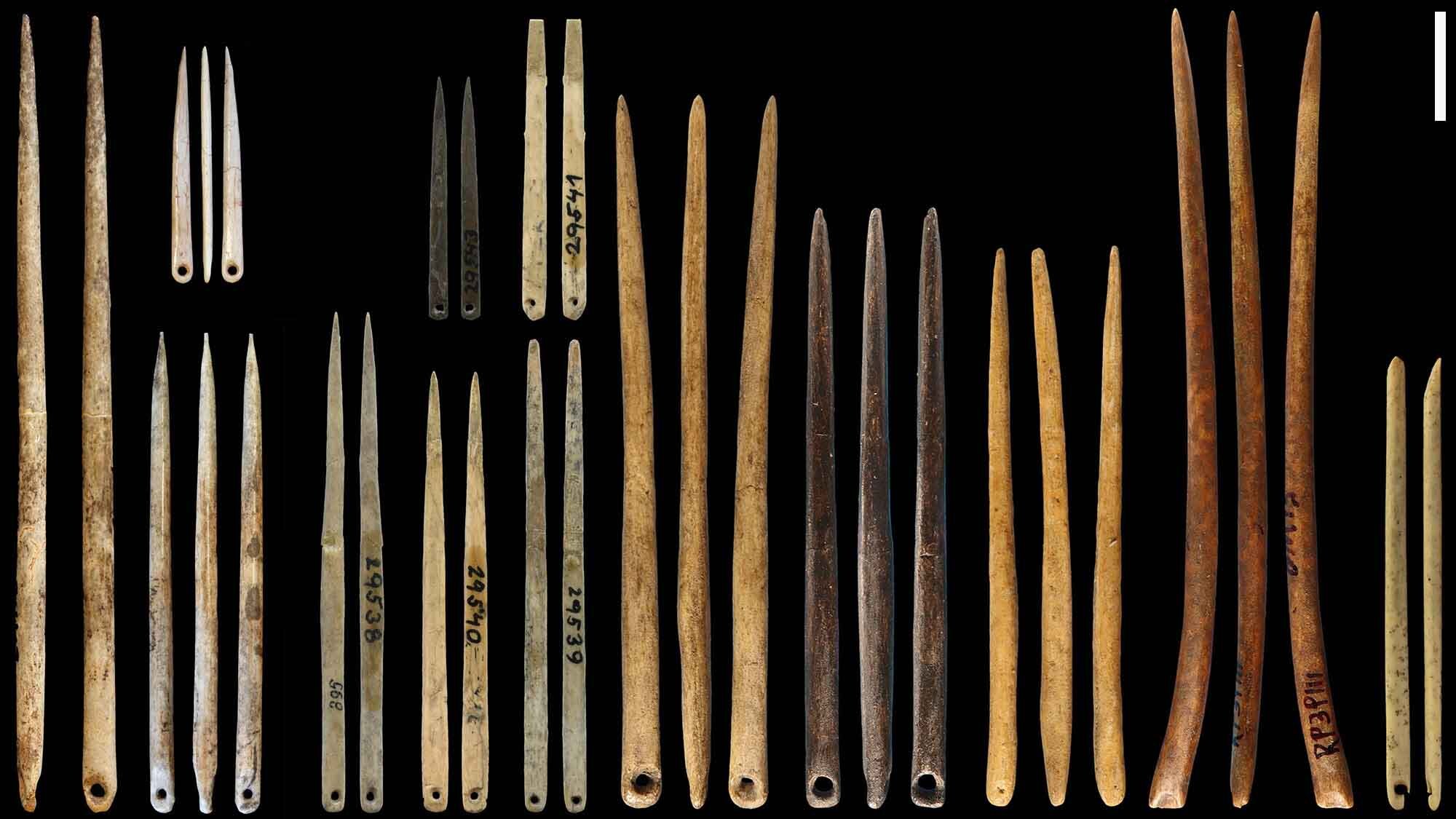A team of researchers led by an archaeologist from the University of Sydney in Australia is the first to suggest that eye needles are a technological innovation used to decorate clothing for social and cultural purposes, marking the first shift from clothing as a means of protection to an expression of identity.
“Eye needles are an important development in prehistory because they document the shift in the use of clothing from utilitarian to social functions,” says Dr. Ian Gilligan, one of the study’s authors.
From stone tools that allowed the preparation of animal skins as a means of protection from extreme temperatures, to bone tools and piercing needles for the manufacture of fitted and decorated clothing… what prompted humans to start wearing clothing to express themselves and impress their peers? Ask the researchers.
According to their findings recently published in Science advancesDr. Gilligan and his colleagues claim to reinterpret evidence from recent discoveries about the evolution of clothing and fashion among our distant ancestors.
“Why do we wear clothes? We take it for granted as part of being human, but when you look at different cultures, you realize that people have existed and functioned well without clothes in society,” says Dr. Gilligan.
“What interests me is this shift from clothing being a necessity, in certain environments, to being a social necessity everywhere.”
The oldest known eye needles appeared about 40,000 years ago in Siberia. The eye needle is one of the most famous artifacts of the Stone Age, and is more difficult to make than the bone tools, which were sufficient to make tight clothing. These tools are made of animal bone, and are somewhat pointed at one end. Eye needles are modified bone tools, with an eye (or hole) designed to facilitate sewing with tendons or thread.
From useful to nice
Since archaeological evidence already available suggests that bone tools were already used to create personal clothing, the invention of the pierced needle could reflect the production of more complex, multi-layered clothing, as well as the decoration of said clothing by adding beads and other small decorative elements.
“We know that clothing, before the last ice age, was only used on specific occasions. The classic tools we associate with it are scrapers, and we have found that they came and went during different stages of the last ice ages,” Dr Gilligan said.
The latter, along with his colleagues, asserts that clothing became decorative objects because traditional methods of body decoration, such as paintings or deliberate scratching, were not possible during the end of the last Ice Age, in the coldest regions of Eurasia, when humans had to constantly wear clothing in the hope of survival.
“This is why the appearance of eye needles is particularly important, as it suggests the use of clothing as decoration,” Dr. Gilligan continued. “These needles were particularly useful for the fine sewing needed to embellish clothing.”
Furthermore, the regular wearing of clothing allowed for the emergence and formation of more complex societies, where people could settle in cold areas, while cooperating with their tribe or community by relying on common clothing patterns and symbols.
The skills associated with clothing production also led to the development of more sustainable lifestyles, improving the long-term survival and prosperity of human societies, researchers say.
Indeed, covering one’s body, regardless of climate, is a social practice that persists. “We take it for granted that we feel comfortable when we wear clothes, and uncomfortable when we are naked in public. But how does wearing these clothes affect the way we see ourselves, the way we describe ourselves as human beings, and perhaps the way we examine our surroundings?”
Subscribe to our sprawling newsletter
Encourage us to pay for coffee

“Hardcore beer fanatic. Falls down a lot. Professional coffee fan. Music ninja.”







More Stories
The video game will incorporate polyamorous relationships.
Your calls will soon be automatically translated if you have these smartphones
Maxfree S6: A triple-screen system for laptops that can be configured in different ways